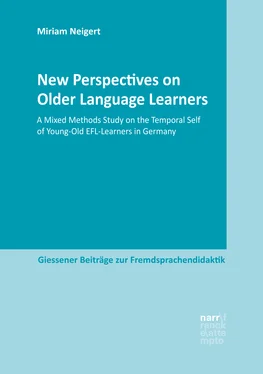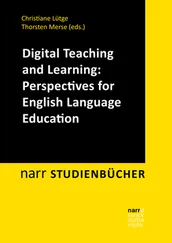Several researchers see the difference between self-concept and self-efficacy beliefs in terms of specificity. Self-efficacy is measured at a more context- or task-specific level than self-concept (Mills 2014: 11; Pajares & Schunk 1994: 194). Mercer (2011a: 15) orders the three concepts of self-esteem, self-concept, and self-efficacy on a scale from global (self-esteem) to tightly context-specific (self-efficacy), with self-concept being in-between. Bandura (2012: 17), however, points out that in many studies the understanding of self-efficacy is often too narrow, being merely on a task-specific level. While he does not doubt the validity or accuracy of studies measuring self-efficacy, he nevertheless reminds us that self-efficacy should be measured in terms of ‘activity domains’ rather than of reducing it simply to the level of tasks. He illustrates this as follows:
[I]n the standard self-efficacy assessment, an activity domain is measured by a set of specific items representing gradations of challenge, but the self-efficacy score is for the totality of items encompassing the domain of activities, not for a specific item within it. […] It is time to retire the misleading claim that self-efficacy theory is inherently wedded to ‘narrow measures’. (2012: 17)
What he calls “activity domains” can encompass different degrees of complexity. It is, for example, possible to measure efficacy beliefs regarding learning a new language (broad scope efficacy) or to measure efficacy beliefs regarding making a booking over the phone in another language (limited scope efficacy). This means that it is more difficult than anticipated at first sight to differentiate self-concept and self-efficacy measures in terms of their specificity (Mercer 2011a: 15). Concluding from this, the primary remaining difference between the two concepts lies in the fact that self-efficacy is more closely bound to “can-do”-appraisals than self-concept. Measuring via a can-do appraisal in this study by asking if a young-old participant can, for instance, envision him- or herself communicating successfully with a native speaker in the near future (see chapter 6) tells us primarily something about his or her self-efficacy regarding that task. Nevertheless, we can draw conclusions – together with the results of similar questions – regarding his or her self-concept in the domain of using (or speaking) English in the future.
Self-confidence is another self-term often used interchangeably with other self-terms in everyday life. As previously mentioned, Mercer made use of its commonality when investigating the L2 self. When interviewing her study participants, she used the more lay-friendly term ‘self-confidence’ when, in fact, she was actually researching the more complex concept of ‘L2 self’ (2014: 166 & 173). What exactly constitutes self-confidence – or, in this case, more specifically L2 self-confidence (L2C) – and how it is developed, shows in what way it differs from self-concept.
Clément has done extensive research on L2 self-confidence. Together with Sampasivam (2014: 25), he refers to L2C as a “higher-order variable encompassing both a lack of anxiety and positive self-ratings of L2 proficiency.” On a more general level, Dörnyei (2005: 73) defines self-confidence as a “belief that a person has the ability to produce results, accomplish goals, or perform tasks competently.” At first glance, this definition of self-confidence is reminiscent of self-efficacy. According to Mercer (2011a: 17), however, L2 self-confidence is less domain-specific than self-efficacy. Moreover, Dörnyei (2005: 73f.) adds that self-confidence is less cognitive than self-efficacy and primarily socially constructed.
Indeed, when it comes to the development of self-confidence, Sampasivam and Clément (2014: 25) report that self-confidence develops through “contact experiences.” Based on this, context of L2 acquisition plays an important role for the developing L2 self-confidence. Sampasivam and Clément (2014: 26) conclude that it is worthwhile to organize L2C literature according to learning outside and inside the classroom. Previous research suggested that “it is considered to have a less influential role in communities with infrequent intergroup contact compared with multilingual communities. Nevertheless, the quality and quantity can have different effects.” (p. 25)
In the case of the young-old learning at Volkshochschulen (hereafter vhs centres)1 in Germany, which can be considered a foreign language learning (FLL) context, contact with native L2 speakers is rare. Does this mean that learners’ self-confidence does not develop as well in a FLL context as it would develop in a SLA context due to a lack of “contact experiences” with L2 community members? Clément et al. (1994: 42) write that language self-confidence and language anxiety can be linked to L2 classroom experiences (e.g. evaluations by the teacher or other learners). Moreover, Sampasivam and Clément (2014: 27f.) report studies which “suggest that in the FLA context, foreign media use and perceived importance of contact were better predictors of motivated learning behaviours (items concerning the different aspects of students’ learning behaviour) than more direct forms of contact.” The young-old learners who are learning a language at vhs centres in Germany can form their self-confidence independently of direct contacts with the L2 community. Classroom experience (e.g. external frame of reference; see chapters 7 & 8) and indirect contact through such things as media, as well as the degree of importance they place on these aspects of language learning, shape their feelings of anxiety and self-confidence. Mercer (2011a: 17) also contrasts self-concept and self-confidence respectively in regard to the focus of their affective dimension:
It thus seems that whilst L2 linguistic self-confidence reflects some aspects of self-concept, such as domain-specific beliefs of competence, the affective dimension differs as it focuses more on feelings of anxiety, whereas the affective aspect of self-concept is more typically concerned with evaluative feelings associated with the self-beliefs in the domain.
Summing up this short discussion of L2 self-confidence, the key differences in regard to self-concept lie in, firstly, its development through direct and indirect contact experiences (in- as well as outside the L2 classroom) and, secondly, its more specific link to anxiety.
In the above, I have discussed what we need to consider when using self and self-concept terminology. I have introduced several perspectives on self-concept structure and its formation, and finally have contrasted self-concept with some other self-terms, which are commonly investigated in SLA research but often confused, in order to create a clearer picture of what self-concept is, or is not in the context of this study. In the following, I would like to sum up the discussion in this section and come to my understanding of self-concept.
The conceptions of our self are subjective. From the various attempts to describe or paraphrase self-concept, the two key terms perceptions or beliefs highlight particularly well how our self-concepts create a subjective reality of our selves. The way a young-old conceptualizes his or her language learner self diverges and overlaps with how others – teacher and classmates – may view it, creating a dynamic between different subjective realities. Whether we are talking about one general self-concept or about a multitude of self-concepts: we are dealing with different, domain-specific self-concepts, such as foreign language learning, but also at the same time with a unifying, core sense of self. The core and peripheral facets of self-concept also come into play when taking a look at its structure and formation.
Читать дальше












